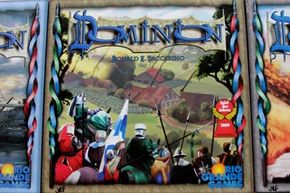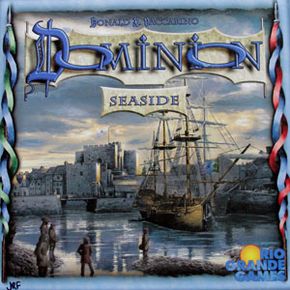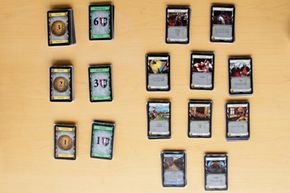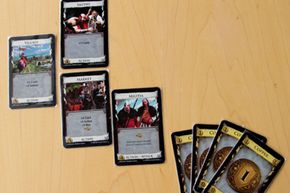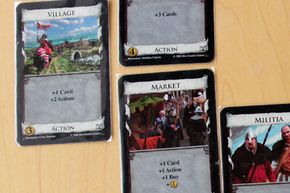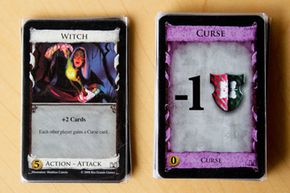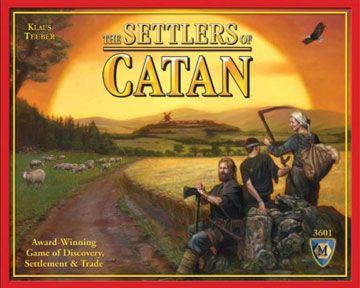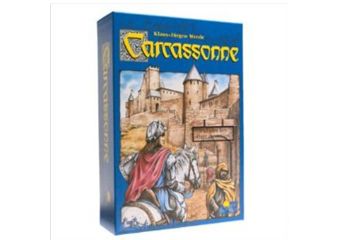It's good to be king -- or queen, for that matter -- as you amass treasure, build villages, create libraries and laboratories, and luxuriate in feasts and full wine cellars. Careful, though: The road to an enduring royalty is a rocky one. You'll need to guard against spies, thieves, warring militia and witches' curses. That promise of adventure with a glimmering hope of success is why playing Dominion, a card game in which you build your deck as you play, is so enticing. With the masterful use of a few cards, plus a few strokes of luck, you can take your kingdom from humble home to bountiful domain.
The game takes much longer to explain than it does to actually play. After the first few turns, Dominion becomes nearly intuitive as the behind-the-scenes rules system takes over -- even before you fully understand the dynamics of the game. It's a bit like setting out to play rudimentary scales on the piano and inadvertently mastering Chopin. (Or, for all you gamers out there, like sitting down to learn Magic: The Gathering and realizing that it's as simple as Settlers of Catan.)
Advertisement
Dominion is easy to pick up but challenging to master because its modular nature (players choose which components -- in this case, cards -- to use each time) means that the basic rules never change, but every game requires different deck-building strategies. But before we get into Dominion's mechanics, let's consider how deceptively easy it is to win: The player with the most points at the end of the game triumphs. And to get points, all you need to do is buy more Victory cards -- or more higher-valued Victory cards -- than your opponents.
Dominion is designed for two to four players, ages 13 and older, and you can expect your first game to take an hour or more. You'll need to sort the cards, peruse the rulebook and wrangle your way through the first (often painfully slow) rounds. But once the concept clicks, you can expect to play -- start to finish -- in 30 minutes to an hour. Hitting the finish line in the time it takes to watch a TV show feels satisfactory: Any longer and the game would begin to feel a bit like Monopoly (without the game board and mustachioed mascot, of course). Any shorter and it would seem suspiciously (and boringly) easy.
And, because you choose 10 different types of cards each time you play, it would take hundreds of years of continual game play to realize every possible configuration of the original, 25-card set alone. Make that billions of years when you consider that more than 200 Kingdom cards have been added to the game through expansions since it debuted in 2008 [source: Mastrapa].
